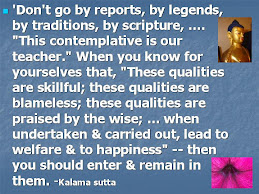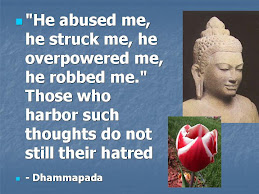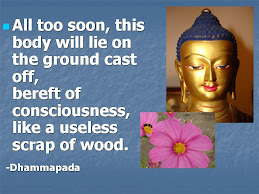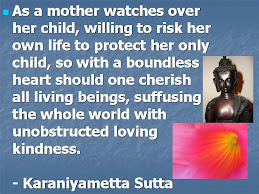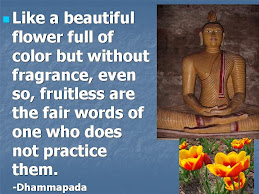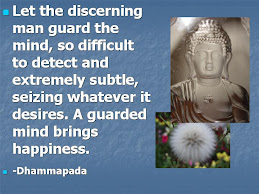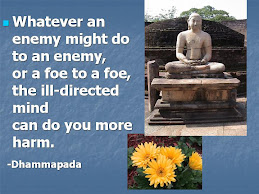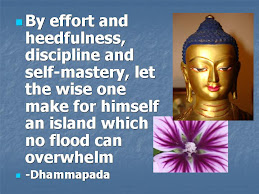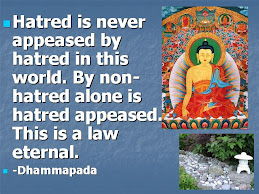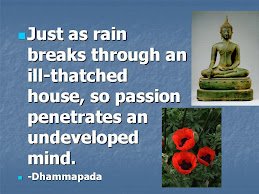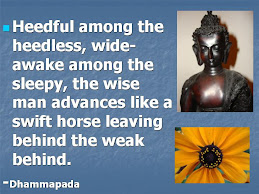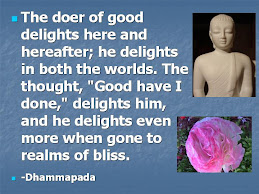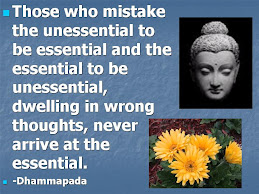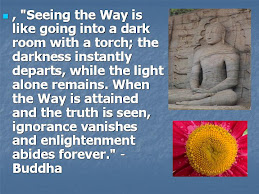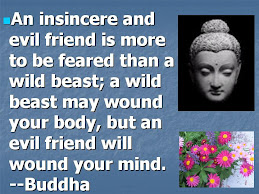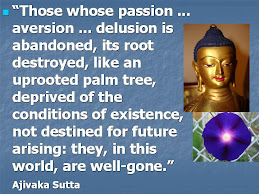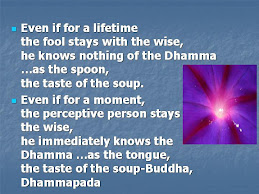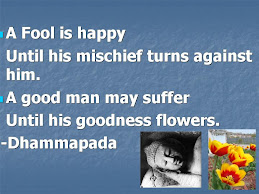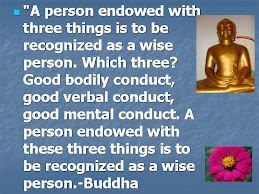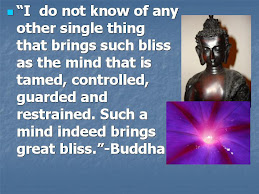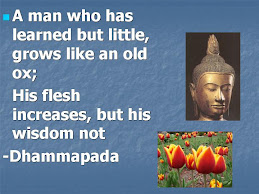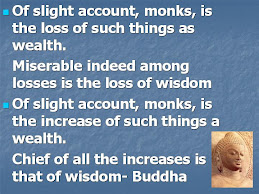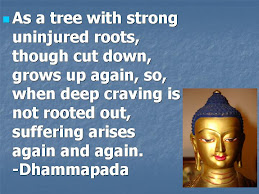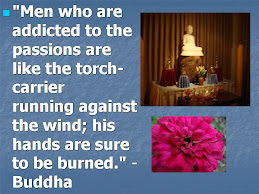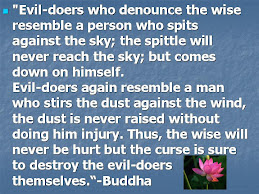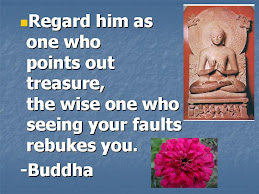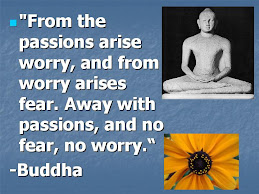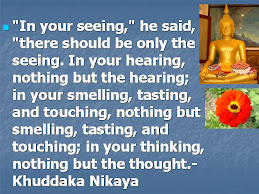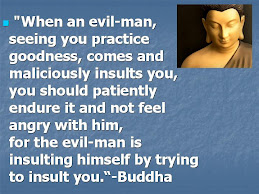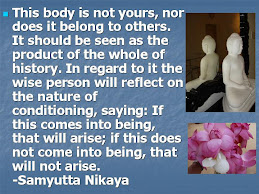
How does this happen?
What changes in the cognitive processing lead to these two completely different responses in the mind ?
We will first take an example to illustrate this. Supposing two people (A and B) see the same person (C), one may like the person C and the other one may dislike the person C. However these likes and dislike have nothing to do with the third person C. The person C is just an object that triggered a series of mental processes in each observer (A and B). The person C is completely unaware it.
Let us see how this happens. When the eyes of the person A and B meet the person C eye consciousness arises in both. The meeting of the the eye, the object and the eye consciousness will cause eye contact in each of them. This gives rise to perception, feeling and thought formation,* saying "I like you" in the person A and "I dont like you" in the person B. Previous memory about the person C is the critical factor for the differences in the opinion.The past memory of liking of the person C will influence the feeling and then the perception giving rise to positive thoughts. If the person A has never seen person C, some memory of familiarity to someone similar to C will influence the positive feeling. For example, the person A might think "she reminds me of my mother." The opposite mental process happens in person B. A past memory of dislike of person C will influence the feeling and negative thoughts. Again if the person B has never seen the person C, past memory of familiarity to some one similar will influence the negative feeling. For example the person B might think, "she looks like the person that always hates me."
It is clear that past memories inflence the feelings, perceptions and thereby subsequent series of thought formations. This way we may judge people too soon. The exact mechanism how this happens is explained in detail in previous posts like how the mind works, cognitive series andclinging.
The important thing to note here is that everything that happened was within the mind of the person A or B. The person C has nothing to do with it except being the trigger. It is not the person C that the person A likes or the person B dislikes. It is his own feelings the person A likes and it is his own feelings the person B dislikes. However the person A or B does not see it this way because of ignorance.
If you investigate this further you will find these are merely changes of "Name" phenomena (Nama Dhamma) of the "Name-and Form" (Nama-Rupa). They arise and fall away extremely fast speed with each sensory contact (please see the post on cognitive series). You will also find this all a mental process and there is no one really in control. There is no absolute free will. There is no person or a permanent self in charge. This is nothing other than the work of our six senses, working together with the five aggregates.
The same principal applies to everything we see, hear, smell, taste, touch and think. The stress or suffering we cause ourselves has nothing to do with the another person or a thing. It is caused by our clinging to thoughts generated by our likes and dislikes and our perceptions based on previous memory. However it is very difficult for us to see this although it happens right here in our own minds even as I write this post (like) you read this post (like or dislike).
Only way to see this process clearly is through practice of mindfulness. We have already discussed this in a post called how to fix your mind.
*Please see the posts on mind works, cognitive series to understand the interaction between these mental processes such as consciousness, contact, feeling, perception and thought constructs (mental formations).














